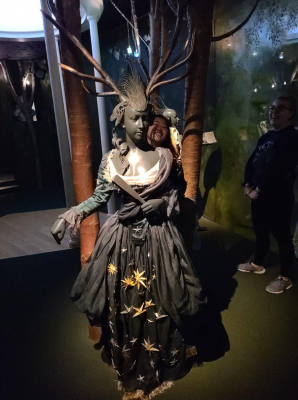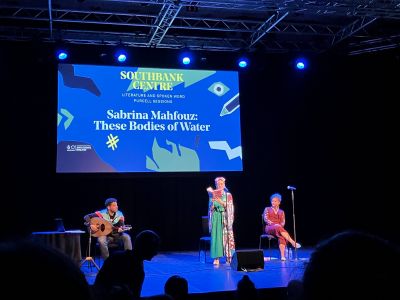As all mornings here do, mine started out with a Pret run and a “white” Earl Gray. (It turns out that if you ask for an Earl Gray “with milk,” they’ll put the milk in a separate cup, and that’s never quite what I’m going for.)
After our morning meeting and class time, we headed to the Museum of London to explore the history of the city, focusing particularly on the exhibits dealing with 450,000 BC- 50 AD (Pre-London), AD 50-410 (Roman London), and the 1950s – today.
I’ve never been big on taking photos in museums, so I don’t have many to share with you here, but I did have a grand time looking at the bones of early humans in the Pre-London exhibit. The museum also had a number of immersive exhibits like the one pictured below of a late 1700s pleasure garden. That exhibit included a projected film of revelers conversing with each other, but other exhibits included streets and post offices from long-past variations of London.

As all things do, our time at the museum had to come to an end as hungry stomachs made themselves known, and we made our way through the drizzle outside to a falafel restaurant called Pilpel. Today’s been the first day that it’s really rained in London since we’ve been here, so it was nice to have someplace dry to eat.

In the afternoon, our little group realized we were near the Tower of London, so of course we had to go and visit. We took a tour of the crown jewels exhibit (no photos allowed, sadly) and also walked through a number of the towers. I hadn’t realized this previously, but the Tower is actually made up of eleven towers, and actually looks quite a bit like a castle. Some of the nobles who were held there actually seemed to have lived far more comfortably than I had imagined.
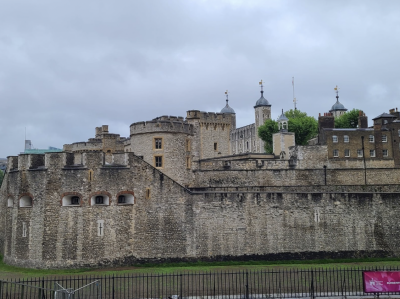
In the evening, the full group met up with Peter and Leah again at the Southbank Centre for the launch of Sabrina Mahfouz’s book These Bodies of Water.
Even from the beginning, the launch was nothing like I’d expected. These Bodies of Water had begun as a play, and so two members of the team from that endeavor joined Mahfouz on the stage, one with a many-stringed instrument (perhaps an oud?) and the other with her voice for singing and reading alongside Mahfouz. On the whole, using music and projected images created a very engaging presentation of her work, but it was also the content of the book that I felt made the event unique.
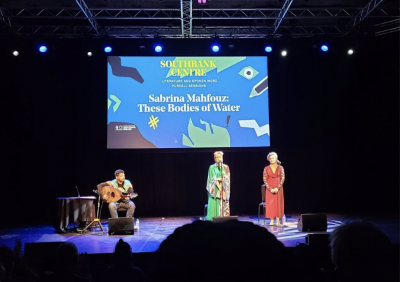
See, Mahfouz opens her book with a scene of her, a British Egyptian woman living in England, trying to get a job in the Ministry of Defense. She writes about how she “wanted to get to the top of an establishment that had shunned people like me for its entire existence.” In doing so, she underwent a vetting process to determine her relationship to England. This, in turn, forced her to examine her relationship with England and its very complicated history of colonialism. From that examination came her book.
She writes about colonialism, yes, and how the long arm of England is tied to the waterways in the areas of the world that it controlled/controls. But in each of her chapters, which are organized by country (Egypt, Yemen, Bahrain, etc), she also includes stories of women from the region alongside cold-hard facts of colonization, and her own memoir writing. I think it’s those stories more than anything that drew me to her work, because without the stories of individual lives, the tales of injustices can turn into nothing but empty facts and blank, forgettable faces.
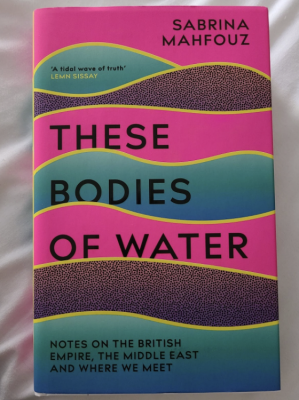
As someone who just took Jessica Baldanzi’s class on memoir last semester, I’m really interested in seeing what These Bodies of Water has to teach me, both about memoir writing and the long and lasting impact of England’s empire.
Blog post provided by Kristin Jantzen, a senior double majoring in English and secondary education.





